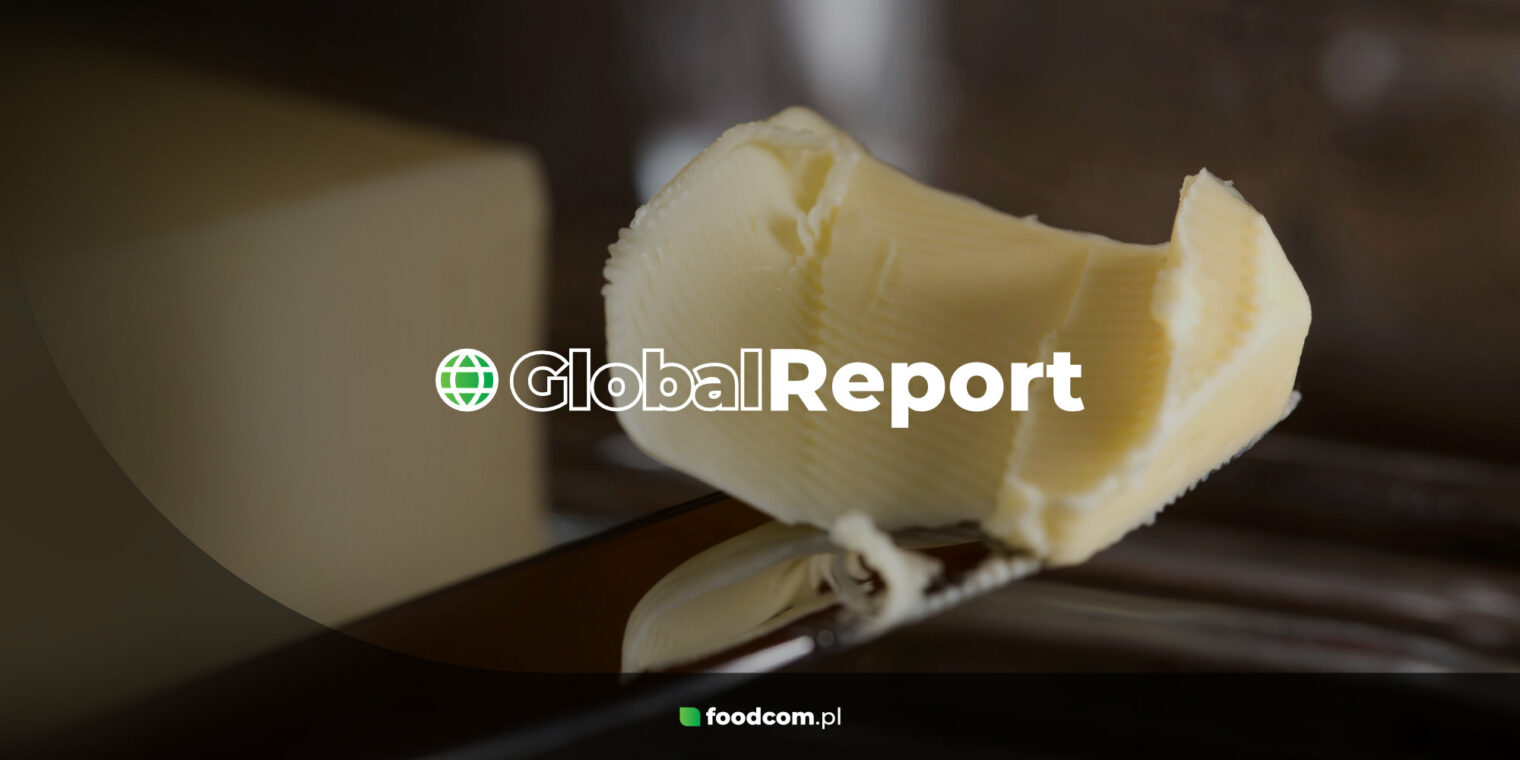- The Butter market is estimated at US$46.8 billion in 2023, with a CAGR of 3.8% over the next 10 years.
- In Q1, an initial lack of interest led to a drop in prices, but the surge in demand in February led to a subsequent rise in prices.
- After Easter, prices remained stable as producers resisted price cuts despite high availability.
- During the holidays, prices fell due to high Butter stocks and lower buyer activity, but September saw noticeable price increases.
Butter market analysis
The Butter market is expected to reach a value of US$46.8 billion in 2023, with a projected CAGR of 3.8% over the next 10 years. The demand for Butter has increased due to its widespread use in numerous food products worldwide. Simultaneously, the global expansion of cafés and restaurants has contributed to the rising sales of Butter.
However, it should be noted that the Butter market is very dynamic and the situation changes from week to week. Prices are influenced by the situation on the Cream market, as Butter is made from it. In addition, seasonal fluctuations also play a role. Before the holidays, demand increases, as the production of bakery products increases then. During the vacations, on the other hand, many buyers leave and demand falls.
Butter market in 2023
According to European Union data, the largest exporters of Butter to countries within the EU in January-May 2023 were the Netherlands, Germany, and Ireland, while the largest exporters to countries outside the EU were Ireland, France, and the Netherlands. The largest non-EU importers were the USA, UK and China. What is more, for the period of January to May 2023, European imports from third countries have surged by 17%, showcasing a substantial growth compared to 2022. In the same period Butter exports to third countries have experienced a noteworthy increase of 9% compared to 2022.
At the beginning of 2023, the Butter market faced a decline in prices due to low initial interest, which turned into a year characterized by dynamic changes in demand and seasonal influences. Prices fluctuated between highs of 5200 EUR/MT and lows of 4100 EUR/MT (for EXW Central Europe). Read on to find out how the situation developed in the individual quarters.
Q1
At the beginning of 2023 there was not much interest in Butter on the market, not many inquiries, so the price began to fall – from a level of 4750 – 5100 EUR/MT to 4100 – 4400 EUR/MT. Butter producers claimed that the cuts had gone too far, although the reductions were not seen in the retail sector.
In February, the situation changed, as there was a significant rise in the demand for Fats, especially from the retail sector, but it shifted to other buyers. Each day we witnessed an increase in price. Buyers even accepted the price starting with 5 for Q2 and Q3 combined.
In March, the price of Butter was subject to fluctuations, starting at 4600-4850 EUR/MT on March 7 and gradually decreasing to 4500-4600 EUR/MT by March 28. This was mainly due to the fact that as we got closer to Easter, prices fell as most buyers were already secured. Concerns arose as to whether the lower prices would last for producers, as they complained that these prices were below their production costs.
Q2
After the Easter holidays, some buyers postponed their purchases in the hope of a drop in prices. But although the Cream became cheaper, Butter producers resisted lowering prices, preventing substantial sales.
In May, we saw great demand for the Butter which met with its high availability. As of late May, there was a notable surge in Cream prices, leading to a substantial increase in quoted Butter prices. Then the first contracts for Q1 2024 were signed and prices reached 4750 – 4900 EUR/MT.
In June, we observed mainly purchases for Q4 2023 and Q1 2024 and reduced short-term activity. Despite the high temperatures, prices have remained quite stable – all thanks to large stocks of the product in cold storage. Butter prices declined slightly at the end of June as buyer demand had been met in previous weeks. As vacations approached, there was a lull in market activity.
Q3
In June, we could see prices drop again. This was related to the fact that there was a lot of Cream on the market, the warehouses were filled with Butter, but there were not too many buyers, after all, some of them went on vacation. Into July, there was still plenty of Butter on the market and in storage, but producers continued to struggle with a lack of demand. Prices reached 4150 – 4400 EUR/MT.
In September, the situation finally started to move. After the summer vacations, the demand for Butter, especially cubed, increased. However, block Butter was still waiting for a favorable market At the end of September, Butter prices reached 4750-5050 EUR/MT, showing a clear upward trend comparable to the trend in Cheese prices. This synchronized rise highlighted a significant transformation in the dairy market, because we finally saw noticeable price increases.
Q4
Q4 has just begun, but we are already seeing Butter prices continue to rise. European Butter prices continued to rise in the second half of October, driven by strong retail demand in anticipation of the upcoming fall and winter vacations. The ongoing uncertainty in the market raises the question of whether this trend will continue into the final months of 2023.
Global Reports from Foodcom S.A.
Curious about what’s next for Butter? Discover the latest trends and insights that will shape the final months of 2023. Visit our blog as we regularly update our Global Reports. Stay up to date with Foodcom S.A.






